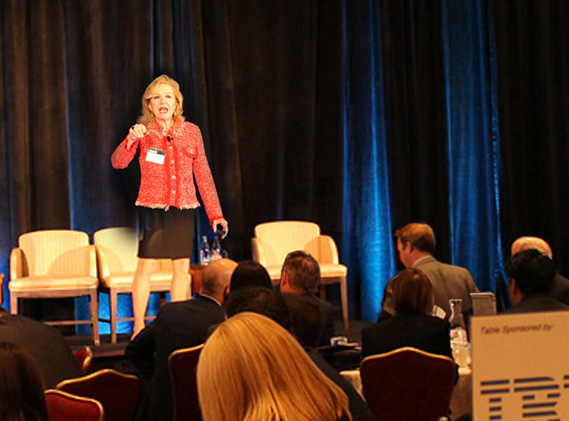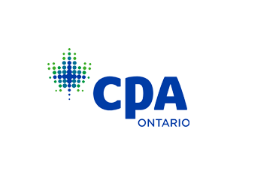60 Minutes of relevant Professional Development from your computer
Top 12 Virtual Presentations
The world has changed. And so must we. But don’t despair, the changes are easy. Certain skills have always been prized in the workplace, but now a few of those are simply going to be more prominent. Post pandemic research is pointing squarely at three particular skills that will be needed: self-direction, empathy, and resilience.
Professor Paul Byrne
The future of work can be best described as hybrid: remote, in-office, and bit of both. This brings new questions and challenges around appropriate attire, acceptable social behaviours, and business etiquette. Now is the time to revisit the important components of business acumen to avoid making mistakes and to demonstrate our professional awareness of the emerging social and business expectations.
Join us for an illuminating virtual presentation to learn the approaches to best serve you and your clients.
Lynne Mackay
Learn the skills of emotionally connecting with others.
Learn the simple skills of authentic client communication by knowing how to tap into the autobiographical urge of others. Asking the right questions at the right time builds your emotional foundation with existing, or prospective clients. Explore the power of empathy and the importance of listening well.
Curiosity, Resilience: Interested versus Interesting
Revive the most important emotional skill to likeability. Realize that money (business, goodwill) flows in the direction of biographical knowledge. Think your way to a happier life.
Empathy: Gold Standard of Emotional Intelligence
Incorporate the gold standard of emotional intelligence into your life.
Like a rare commodity this skill predominates in high-performers but is available to all.
Professor Paul Byrne
We’ll explore the typical difficult interactions of your workplace and discuss approaches that lead to improved outcomes.
This highly regarded virtual presentation uncovers the often-hidden motivations of why we act the way we do, and provides practical, easy to implement, strategies to turn negatives into positives and strengthen interpersonal relationships. We’ll explore the typical difficult interactions of your workplace and discuss approaches that lead to improved outcomes.
To be at our best when we most need to be requires having the confidence and competence at recognizing potential problems and circumventing them before they escalate. Dealing with difficult clients requires that we be at are best under pressure. To engage clients with tact, diplomacy, skill, and compassion are the hallmarks of learned communication competence.
Our responses to these clients must be based on professional integrity and assertive communication while still maintaining a supportive communication climate. We need to explore the underpinnings of unreasonable requests and behaviours in order to understand them and move ahead with supportive professionalism.
Client negotiations can sometimes leave us feeling frustrated when we feel the client is being unreasonable. Our responses in these situations will have an impact on the present negotiations, engagement with the file, future business, and so on.
Recognize that conflicts will happen in the workplace, our goal therefore is to be at our best when it’s most required of us.
This virtual presentation borrows from the time-tested principles of a simple message:
‘Grant me the serenity to accept the things I cannot change; courage to change the things I can; and wisdom to know the difference.’ Reinhold Niebuhr
Professor Paul Byrne
Your professional image can be either built or undermined by your presentation abilities.
Do your presentations have the impact you intend? Does your delivery grab and hold your audience’s attention? Do your words motivate audiences to action? Your professional image can be either built or undermined by your presentation abilities.
This highly successful virtual presentation, customized for professionals, will enhance your presentation skills and give you the insights you need to project a confident professional image in any speaking circumstance.
We’ll cover everything you need to know to deliver any presentation with clarity, persuasiveness, and confidence.
This course is designed for professionals with an emphasis on focusing on an objective to inform or persuade, analyzing an audience to match message to needs, developing visuals to enhance your message, and projecting competence through body language and voice.
- Deliver a presentation with confidence and skill
- Organize your presentation structure for maximum impact
- Reduce distracting non-verbal communication habits
- Polish delivery and make effective contact with audience
- Make performance anxiety work for you
- Accurately analyze an audience
- Strengthen speech patterns to increase credibility
- Communicate with clarity and conviction
- Demonstrate control in difficult to control situations
- Target message to audience and attitude
- Build speaker confidence (dealing with nervousness)
Professor Paul Byrne
This one hour virtual presentation is just what you need to write clear, concise, business letters, memos, emails and reports.
Anyone who works at a desk knows the importance of good writing skills. This one hour virtual presentation is just what you need to write clear, concise, business letters, memos, emails and reports. Professionally relevant activities and basic dos and dont’s will have you writing like a pro in no time. Discover the secrets to well-written sentences and learn how to quickly organize your thoughts.
Too much writing and too little time is the recurring challenge of the busy professional. Learning how to focus your main message and bring it to your readers’ immediate attention are the keys to fast and effective business writing.
Content:
Getting Started
- The right words to start
- The primary information: inform or persuade
- The structure of all correspondence: pyramid method
Writing on the Job
- Correspondence formats
- Informative subject lines
- “Netiquette” of electronic mail
Persuasive Correspondence
- Requesting approval
- Making a suggestion
Style
- Good paragraphs
- Strong sentences
Professor Paul Byrne
To elevate the inner strength innate in all of us and to foster the confidence that leads to enhanced performance.
We all perform better at, any and all, tasks when we feel confident in our abilities. No matter the endeavor, from doing a task to having a conversation, our performance is improved when we feel comfortable and confident. The question is how to create comfort and confidence.
This virtual presentation explores the underpinnings of keeping your composure and self-confidence high in the midst of hardship; how to identify and overcome your self-imposed barriers and limits. Learn to create win-win solutions with everyone you work with. In this exciting virtual presentation, you’ll learn how to confidently express your ideas and feelings; deal with negative, aggressive, and difficult people; never feel the need to make excuses, over-explain, or over-apologize. You’ll learn how to speak about your accomplishments with accuracy and confidence.
To be at our best when we most need to be requires having the confidence and competence at recognizing potential problems and circumventing them before they escalate. Being assertive in clarifying expectations early in the engagement is essential.
- Explore the role of non-verbal communication in enhancing composure and confidence
- Think rationally to protect your positive attitude
- Confidently express your ideas and feelings
- Regain composure after a stumble
- Maximizing our impressions management skills
- Self-concept and its influence on our work
- The importance of emotions in the workplace
- How to be politically savvy through assertive communication
- Deal with difficult people.
Professor Paul Byrne
Learn the skills to be clear, concise, and appropriate when informing others.
People do appreciate being well informed, but only when the information is relevant, profitable, and well communicated. Don’t risk alienating others with poorly executed communication. Impress all with your ability to simplify the complex, get to the heart of the matter, and motivate receivers to want to pay attention.
Part One: Email Writing
• Make written communication easy to write, easy to read, and easy to understand
• Identify the reader to maximize impact
• Identify the main message to get to the point
• Focus the message to inform and persuade
• Develop the details to ensure accuracy
• Organize the structure to ensure appeal
• Write with a style that presents professional competence
Part Two: Spoken Message
- Deliver a presentation with confidence and skill
- Organize your presentation structure for impact
- Reduce distracting non-verbal communication habits
- Polish delivery and make effective contact
- Make performance anxiety work for you
- Accurately analyze an audience
- Strengthen speech patterns to increase credibility
- Communicate with clarity and conviction
- Demonstrate control in difficult to control situations
Professor Paul Byrne
The organizations that promote diversity and inclusion will be the ones to succeed.
In today’s multicultural society, successful organizations recognize the importance of a diverse and inclusive workplace to promote employee engagement and wellness, and to enhance productivity.
But a diverse workplace doesn’t necessarily mean an inclusive one. In our communications, we must consider diversity elements such as race, religion, gender, mental health, different perspectives and political views. Both managers and employees can contribute to a diverse and inclusive workplace.
Appreciating diversity is a business imperative. Of course, we should treat all people with respect and dignity in all aspects of our life, both work and personal. Diversity as a business imperative goes beyond this.
It means that if we all had the same background, experience and ways of thinking, we would be limited in our ability to solve problems, develop new ideas, compete in our industry, and, thus, to effectively meet organizational goals.
The organizations that promote diversity and inclusion will be the ones to succeed.
- Understand the benefits of working in a diverse workplace
- Identify opportunities to adopt more inclusive behaviours
- Assess and develop your culturally competence
- Develop self-awareness and learn how to adapt to different communication styles
- Learn strategies to increase collaboration and teamwork
Paula Connolly
Time management is really about managing ourselves.
In this three part virtual presentation series, participants are encouraged to shift how they think about time management. Instead of trying to manage time, participants will understand that time management is really about managing ourselves. We will focus on what stops us from achieving our best results, how to explore our life goals and the strategies to attain them. By adopting creative approaches and technical tools, participants will be able to implement productivity strategies to perform more effectively and to feel more aligned with their life vision.
Participants will be provided will pre-and post-course assignments.
- Understand that you need to focus on achieving results to be successful in your work
- Learn how to develop a life vision and work towards it
- Set SMART goals to more effectively manage your time
- Prioritize tasks based on importance and urgency
- Learn and practice time saving strategies to improve meetings, eliminate distractions and manage email and phone calls
Presentation #1: Shift your Thinking
- Focus on results, not on being busy
- Understand why we don’t manage our time
- Explore 5 steps to effective time management
- Learn why multi-tasking is a myth
- Identify your time management challenges
Presentation #2: Set Goals and Prioritize
- Learn tips to plan effective use of your time
- Write SMART goals
- Prioritize tasks using Covey’s model
- Avoid procrastination
- Learn how to establish a new habit
Presentation #3: Change Your Results
- Learn time saving strategies
- Manage interruptions
- Casual visitors
- Phone and email
- Use technology to save time
- Improve meetings
Paula Connolly
At work, we inevitably must deal with difficult situations and people. It is how we manage these situations that makes the difference. During this webinar, we focus on solving the problem without taking it personally.
You will learn about the characteristics and sometimes subtle differences between assertive, passive and aggressive communication styles. You will gain an awareness of how your own behaviour can escalate or decrease tension in difficult interactions.
You will apply the ABCD assertive communication model to develop and practice assertive conversations that you can use to state your position, ask for what you want or to say no appropriately.
We are living in stressful times right now. More and more, we will need the skills to recognize how our actions impact others and how to manage difficult interactions, especially with customers.
Getting a new customer isn’t easy, so keeping our customers happy is a top priority. Assertive skills help employees to manage interactions more effectively, especially if they learn not to take things personally.
Areas Covered in the Session
- Differentiate between assertive, passive, and aggressive behaviour styles
- Understand how your behaviour affects others
- Identify your “hot buttons” and learn strategies to deal with emotional situations
- Learn and apply the ABCD assertive communication model to manage difficult interactions
Paula Connolly
Benefits Managers working with remote teams
To protect our health, more and more companies are asking employees to work remotely. This presents new challenges from many perspectives from technical requirements to how to stay in touch and produce results. Managers are trying to keep their teams connected and motivated and could use some guidelines on how to face these issues.
Suddenly you and your team are working remotely. This webinar provides tips on how to support your team with empathy and understanding during this difficult time. You will learn how to establish clear expectations for working at home, to stay connected with your team and to promote teamwork to achieve results, while remaining flexible.
Areas Covered in the Session:
- Set boundaries for work and personal life
- Demonstrate understanding and empathy
- Set clear expectations
- Create a support system for individuals
- Promote collaboration for remote teams
- Set up a system to solve issues
To get your professionals to the next level, contact Lynne Mackay today. Email at lmackay@www.mbg.ca or call at 613-298-0646 or 1-877-611-1171





